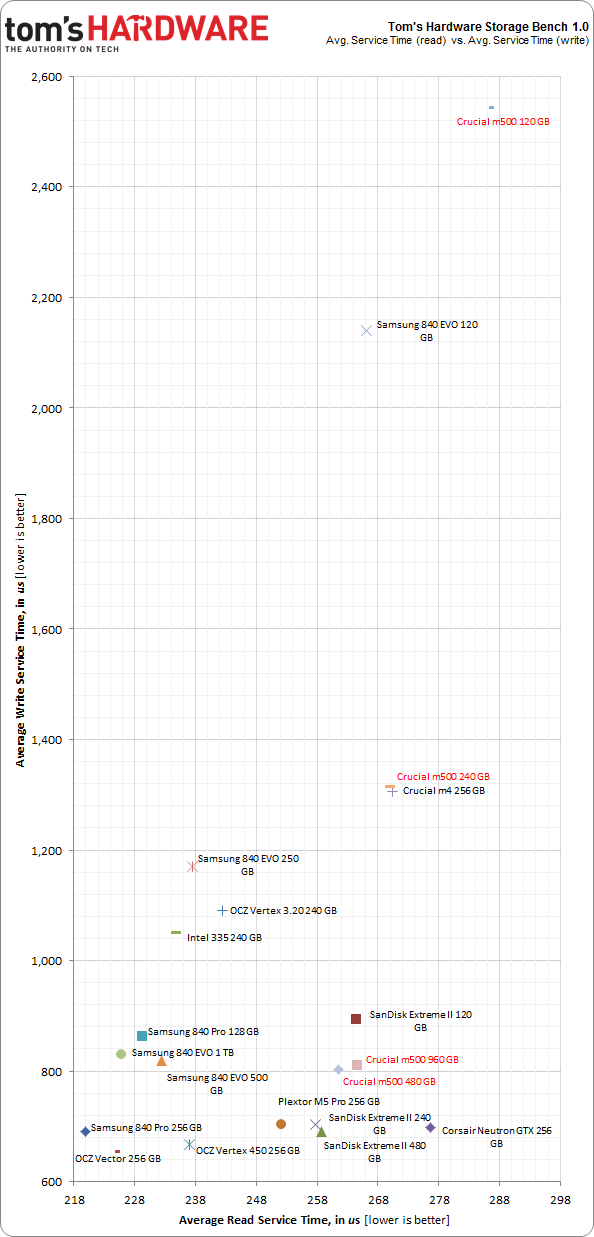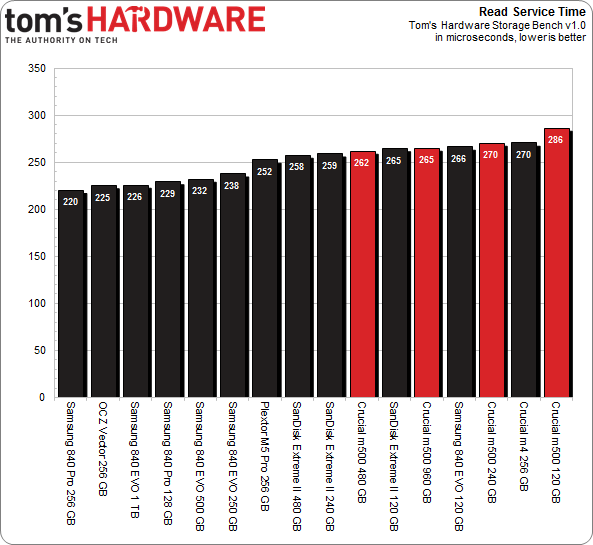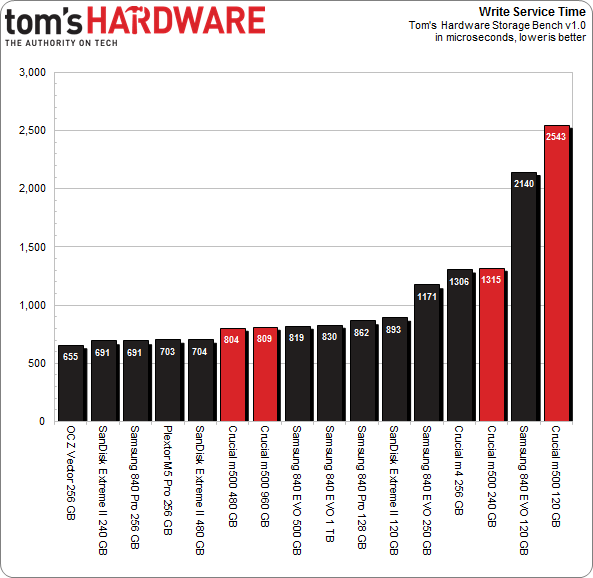SSD Deathmatch: Crucial's M500 Vs. Samsung's 840 EVO
Micron's consumer products division, Crucial, wasn't the first brand to introduce a 1 TB SSD. But it was the first to sell one for less than a fortune, and it sports some snazzy new features to boot. We got our hands on the entire line-up to test.
Results: Tom's Storage Bench, Continued
Service Times
Beyond the average data rate reported on the previous page, there's even more information we can collect from Tom's Storage Bench. For instance, mean (average) service times show what responsiveness is like on an average I/O during the trace.
It would be difficult to graph the 10+ million I/Os that make up our test, so looking at the average time to service an I/O makes more sense. For a more nuanced idea of what's transpiring during the trace, we plot mean service times for reads against writes. That way, drives with better latency show up closer to the origin; lower numbers are better.
Write latency is simply the total time it takes an input or output operation to be issued by the host operating system, travel to the storage subsystem, commit to the storage device, and have the drive acknowledge the operation. Read latency is similar. The operating system asks the storage device for data stored in a certain location, the SSD reads that information, and then it's sent to the host. Modern computers are fast and SSDs are zippy, but there's still a significant amount of latency involved in a storage transaction.
In the chart above, drives that finish closer to the bottom offer better write latency. Moreover, the further you go to the left, the better the read latency is.
With that in mind, all four M500s are comparably quick when it comes to read access times in our trace. Write latency is another story, though. We've already established that write speed is heavily dependent on a drive's total number of dies and the controller's ability to utilize them in parallel. Up to a point, more flash devices give you lower write latency. This is evident in the massive spread between 120, 240, 480, and 960 GB M500s. Clearly, they're a lot further apart vertically than horizontally.
The 480 and 960 GB drives are fairly similar in all of our benchmarks. In fact, the 480 GB model gets a slight performance edge, suggesting that's the sweet spot right now with 128 Gb NAND and Marvell's 9187 controller.
Get Tom's Hardware's best news and in-depth reviews, straight to your inbox.
All of the SSDs we're testing occupy a very narrow range of service times. Really, every product easily knocks our real-world read-based workload out of the part. If we're to get specific, Samsung's drives are the quickest, though we can't say if that's from their three-core controllers or faster flash memory. It's entirely possible that a slower interface is to blame for the M500's slightly lower results.
This trace has over twice as many read I/Os as writes, though writes account for more throughput. And here's where the testing gets dicey for Crucial's smaller M500s.
The 256 GB-class m4 and M500 behave almost identically. Samsung's 840 EVO drives enjoy a huge advantage due to Turbo Write, which emulates SLC. SanDisk's submissions do as well, since they also sport a technology that replicates the behavior of SLC, called nCache. Likewise, the OCZ Vector leverages a similar capability, though each specific implementation is different. OCZ's approach is the quickest of the three, taking first place in our trace for writes and second place for reads.
Crucial's M500 doesn't benefit from those fancy caching features, but rather holds its own through a more conventional design. The two larger models, specifically, perform admirably.
Current page: Results: Tom's Storage Bench, Continued
Prev Page Results: Tom's Storage Bench v1.0 Next Page Results: PCMark 7 And PCMark Vantage

